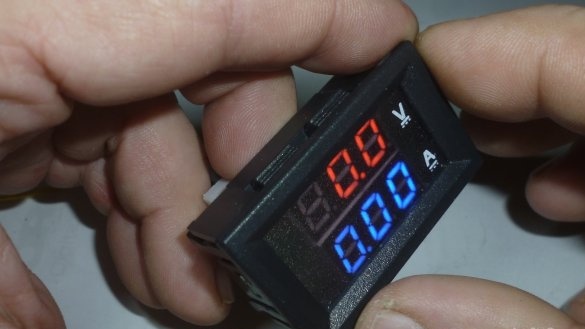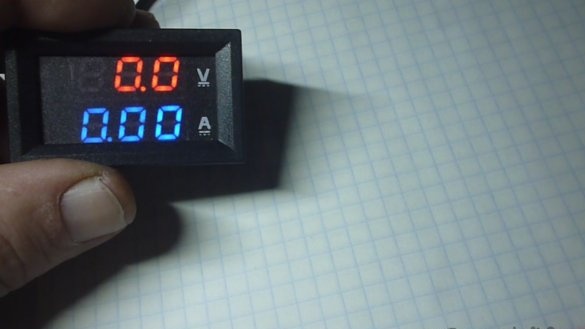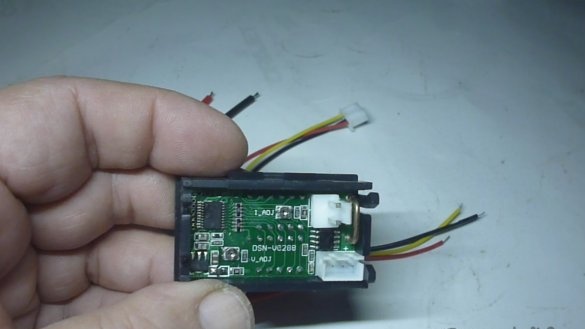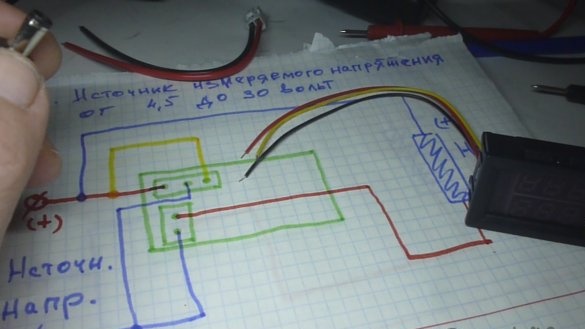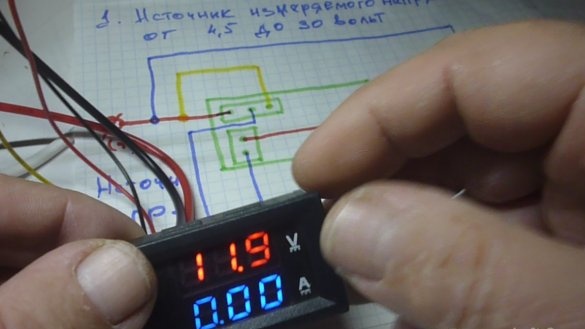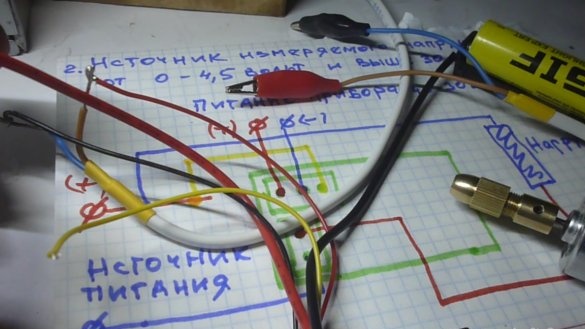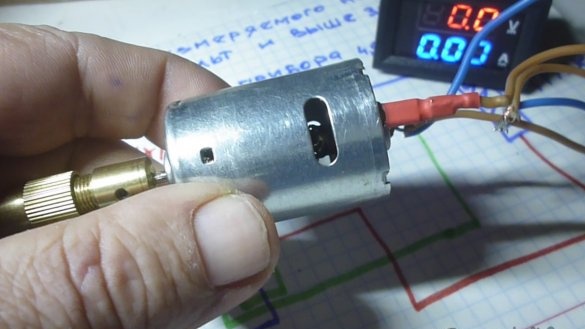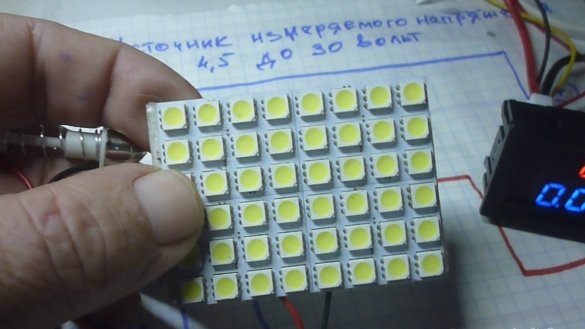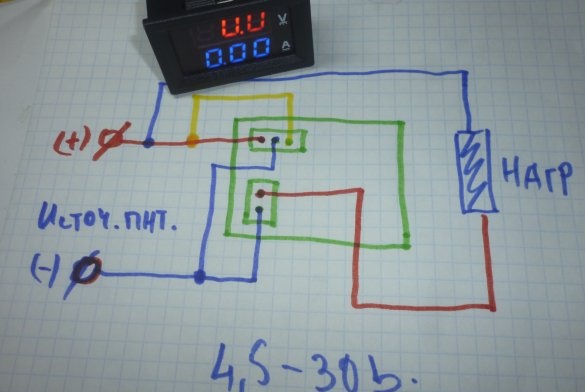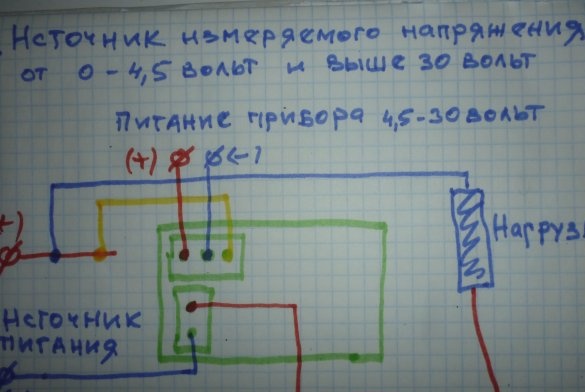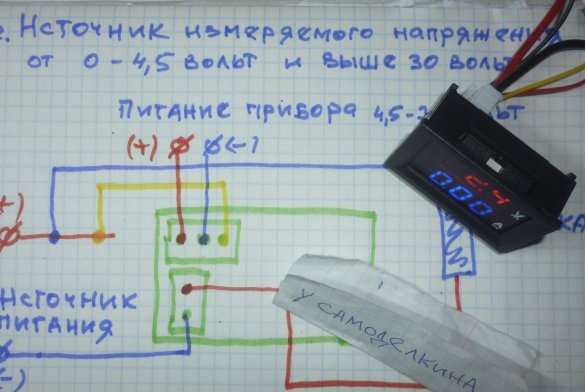Today I want to tell you about one of the most popular, today, the Chinese measuring device, the DSN-VC288 volt ammeter. With operating parameters for measuring voltage from 0 to 100V and current from 0 to 10A.
Volt-ampere meter DSN-VC288, today, is one of the most popular and in demand, for measuring voltage and current strength, among ham enthusiasts and craftsmen. It is installed on various electrical appliances. The price of this device is very budget. In online stores ranges from 100 to 200 Russian rubles. What today, can be considered practically for nothing.
The DSN-VC288 Volt Ammeter is not well suited for assembling a laboratory power supply. Since the minimum step of the indication of the current strength, 10 ma. T.ch. you can put it in the LBP with not too high requirements for the accuracy of measuring the output voltage and current strength. That is, in a home power supply where very high accuracy is not required.
This device is connected very simply. This device has two connectors. A 3-pin connector serves to supply voltage to the device itself. All the same it electronic the system also loves to eat electricity, though quite a bit. The power supply of the volt ammeter is placed in a plug from 5 to 30 V. Contact for removing the measured voltage at the load. The measured voltage is the voltage that we will remove directly from the load from 0 to 100 V. The third contact is a minus. The 2-pin connector measures current in the circuit. It is connected to the circuit through the minus in series from the power source to the load. Also on the DSN-VC288 volt-ampere board are two tuning resistors. Which are used to calibrate the indication of the measured voltage and current, respectively.
Many who had to deal with the above mentioned measuring device are unhappy with the low quality of calibration tuning resistances. Here, as they say, who is lucky and who is not very.
As always, a little about safety. This is important, respect electricity, do not put your fingers in the socket, do not measure the voltage with your tongue and it will not touch you.
For those who like to watch, rather than read, I suggest watching, with pleasure, a video clip with a detailed description of connecting the DSN-VC288 multimeter.
Video clip instruction:
Tools for connecting a measuring device:
1.A soldering iron, preferably designed for soldering electronic circuits, rather than old basins.
4. A control tester that you trust. To check the accuracy of measurement, our device, voltage and current. And further calibration of the DSN-VC288 multimeter.
5. Any load for the control measurement (you can use the LED bulb of the appropriate voltage).
7. Stationery knife for stripping and preparing wires for soldering.
Consumables when connected:
1. Solder.
2. Soldering acid or rosin.
3. A set of wires for installation.
4. Insulation materials, electrical tape or thermal shrinkage.
5. A little electricity to test the device.
The order of connecting our volt ammeter DSN-VC288:
There are two schemes for connecting our volt ammeter.
Scheme number one, connectivity. It is assembled if the measurement voltage fits into the plug of the used voltage of the multimeter. That is, from 5 to 30V.
In this case, the (+) device and (+) the measured load are powered at one point.
When the measured voltage drops out of the plug 5-30V (0-5V or 30-100V), the connection of the positive power cable of the device and the positive wire of voltage relief are connected from different voltage sources. If you supply voltage to the device less than 5V, the device will not work. If a voltage of more than 30V is applied, the device will fail.
Pinout device wires:
1. A block on three wires. I call her a stress block.
- Red. Plus the electrical power of our device.
- The black. Minus the electrical power of our device.
- Yellow. Positive wire for measuring the voltage at the connected load.
2. Block for two wires (Current block, due to the fact that they are connected in series and are designed for high currents, the cross section of these wires is larger than the cross section of the wires of the block to three wires).
- Black wire. Negative. Connects to a power source.
- Red wire. Negative. Measurement wire on load.
The connection diagrams of the Chinese volt ammeter are given below.
The first connection diagram according to the first embodiment. Second in the second.
Scheme 1.
Scheme 2.
If you want to see a very detailed step-by-step explanation of how to connect a Chinese multimeter model DSN-VC288, it is described in the video posted above, also in the YouTube version below the video posted a link to the online store. Where can I get this volt ammeter. Today, for 100 rubles.
For today, everything ... the road will be overpowered by the traveler ... Good luck!

